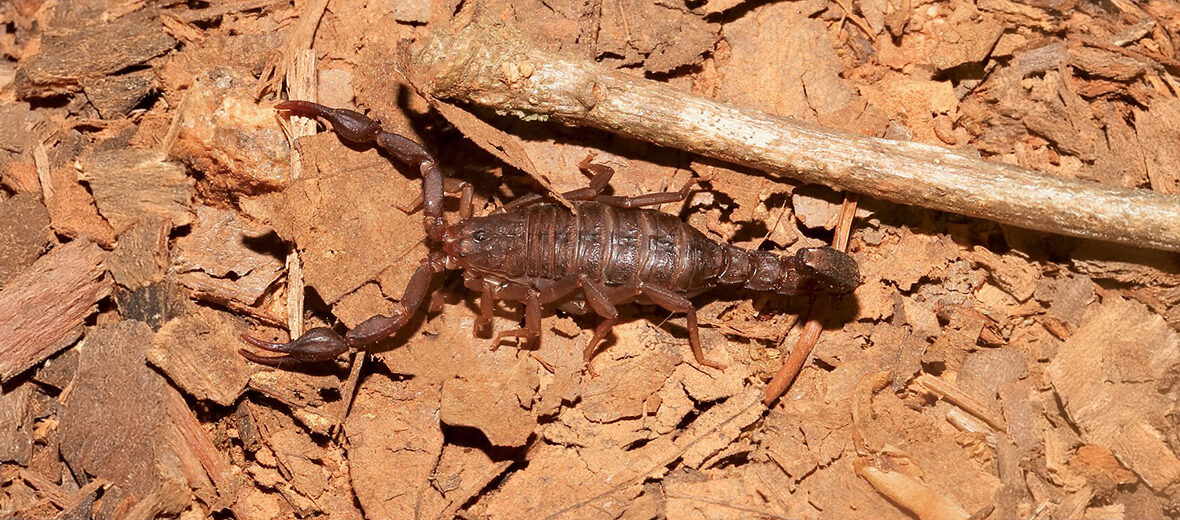
The southern devil scorpion, aka southern unstriped scorpion, can be found in southeastern United States. They belong to the family Vaejovidae (comprising 25 genera and over 230 species, and found in North America). These scorpions are not currently listed with the IUCN as they are abundant, yet rare to find. While visiting in Georgia, I witnessed a juvenile in our host’s home, in the kitchen. They are slower moving, as scorpions go, and not quick to sting. This article is dedicated to Eric and Carol. Thanks for the hospitality!
First the Stats…
Scientific name: Vaejovis carolinianus
Weight: Up to .07 ounce
Length: Up to 2+ inches
Lifespan: Up to 3 years
Now on to the Facts!
1.) They are primarily found among the southern Appalachians, with the majority of observations happening within the Carolinas, Georgia, Alabama, Tennessee, Kentucky, Florida, Louisiana, and Mississippi.
2.) These scorpions prefer mesic mixed woodlands, and are readily found under logs, stones, or the bark of dead standing trees.
3.) Homes and other human structures are frequently entered, and they can fit through rather fine crevices or gaps in windows and doorways.
4.) As is the case with all scorpions, alive or dead, they display fluorescence under a blacklight.
5.) Termites, mealworms, crickets, grasshoppers, and other invertebrates are all on the menu.
But wait, there’s more on the southern devil scorpion!
6.) They also cannibalize younger juveniles of their own kind, if given the chance.
7.) Females produce up to 26 live young each season.
Did you know…?
Stings, while uncomfortable, are not typically life threatening in any way.
8.) The effects of these scorpion’s sting can present themselves with pain, redness, and swelling around the injection point.
9.) The pain persists for up to 20+ minutes, with redness and swelling lasting upwards of an hour or more.
10.) In very rare cases, a sting could lead to more serious symptoms such as muscle twitching, difficulty breathing, or even anaphylactic shock, especially in those with pre-existing allergies or weakened immune systems. But again, this is extremely rare.
Now a Short Southern Devil Scorpion Video!
Be sure to share & comment below! Also, check out the Critter Science YouTube channel. Videos added regularly!

Want to suggest a critter for me to write about? Let me know here.
Some source material acquired from: Wikipedia & IUCN
Photo credit: Laura Gaudette



